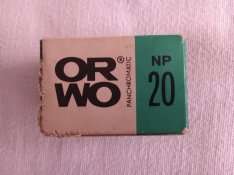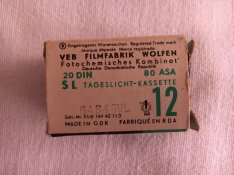Honestly, I'm rather disappointed that the Carat system died -- IMO, it was no harder to load than 126, was as compatible with high optical quality cameras as the Kodak/Leica cassettes we're all familiar with, and could easily have accommodated longer rolls for those who wanted them (standard was 12, and that's fine, but there's plenty of room in those cassettes for 20 or 24, at least).
The Rapid cassette (not the Karat) was Agfa's reply to Kodak's 126 cassette.
The Rapid system offers same guide and pressure features as the 135 system.
But the Rapid system lacks the fool-proofness of type 126 (Where to put te cassettes? Is a filled cassette exposed or not, they look the same?)
It is not a matter of being able to fill more film into a Rapid cassette, but of the camera.
As the film is competely pulled out of the feed cassette into the take-up cassette, there would be the chance expose on the pressure plate, thus the type Rapid/SL camera release is blocked after 12 exposures.
However there are models that start counting down at 16, not 12, exposures. One model locks the release by film-end feeler, another model even has no release lock at all. Thus still chances to feed more film int the camera...
The Rapid system was a super success in West-Germany (in sales of cameras) until finally it was skipped by Agfa in favour of type 126.
The SL cassette though lived on in the Comecon countries, as there type 126 was not implemented.




